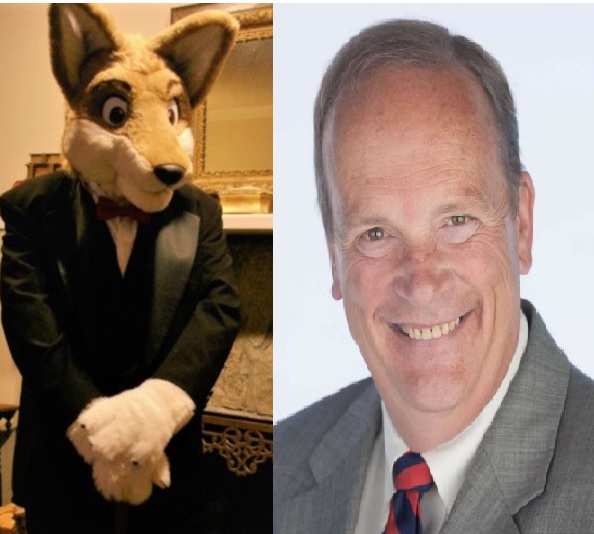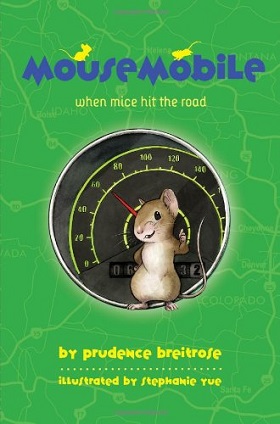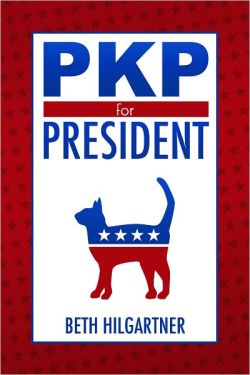computers
A Heritage Foundation executive threatens prison and sexual assault to SiegedSec furry hacker after Heritage hacked
Posted by Sonious on Sat 13 Jul 2024 - 22:12Following a hack by a self-referred "gay furry hacker" organization named SiegedSec, the Heritage Foundation found that two gigabytes of their internal data leaked to the internet. The Heritage Foundation is a right wing think tank within the United States known for their stances against trans rights and abortion. The organization has recently published a manifesto for America known as Project 2025 which catalyzed this hack.
At first the Foundation denied the attack and indicated that the only information obtained was public facing, per a Cyberscoop article, while ironically still calling the action as criminal.
[SiegedSec] stumbled upon a two-year-old archive of The Daily Signal website that was available on a public-facing website owned by a contractor. The information obtained was limited to usernames, names, email addresses, and incomplete password information of both Heritage and non-Heritage contributors, as well as article comments and the IP address of the commenter.
[The story of a hack] is a false narrative and an exaggeration by a group of criminal trolls trying to get attention.
AI Art Part 2: What kind of world do we want?
Posted by Rakuen Growlithe on Tue 14 Feb 2023 - 20:20In the second part of this piece, we will consider the rise of AI-generated art from a more subjective point of view, focusing on its ethical and societal implications. In the first part found here, we went over why AI models do not store and reproduce exact copies of the artworks they have been trained on.
Thank you to 'Yote, who has a PhD in computational biology, for providing feedback and fact-checking for this article.
AI Art Part 1: How it works
Posted by Rakuen Growlithe on Wed 8 Feb 2023 - 14:16If you have any involvement with the furry fandom – and if you're reading this, you probably do – you will have seen a lot of talk about Artificial Intelligence (AI) over the past few weeks/months, particularly about AI-generated art. What you'll also have seen is that most of this talk has been characterised by fear and anger. Several furry websites and organisations, such as Inkbunny, Fur Affinity and the Furry Writers' Guild, have all issued statements or updated their policies to ban AI-generated content or aspects thereof.
As a largely artistic community and given that AI-generated content threatens the status quo, this is completely understandable. The objections to AI art have been numerous; some rely on nebulous and abstract concepts such as AI art being emotionless, some consider it unfair to artists who have put effort into learning their skills and others have chosen to focus on the economic aspects of competing against AI. Anti-AI sentiment has grown in the art community and spilled off of the internet in the form of legal challenges against several companies involved in providing AI art services.
It would be out of scope of this text to address every single argument for or against AI. Instead, I would like to focus on two aspects of the debate; one which is objective and one which is subjective. The first, objective, aspect is what AI is and how it works. This is important because it's difficult to have a proper discussion about the technology when it is misunderstood – and I think that most discussion around AI fundamentally misunderstands how it works. The second, subjective, aspect involves copyright and the ethics of training AI. This is a question about the sort of world in which we wish to live and how we should treat one another. I feel that these two questions are the most important ones for deciding how AI will fit into our world. Hopefully, I can correct some misconceptions about how AI works and put forward a view of the world which others will find appealing as well.
Due to the length of this article, it has been split in two. The second part will address the social and ethical aspects of AI-generated art.
Thank you to 'Yote, who has a PhD in computational biology, for providing feedback and fact-checking for this article.
Fur Affinity bans artworks generated by artificial intelligence programs
Posted by Sonious on Tue 6 Sep 2022 - 20:00On September 5th, Fur Affinity announced it will not be accepting art works that are generated by artificial intelligence programs. Recently computer algorithm generated artwork has come under much discussion as machine learning applications such as DALL-E have shown the ability to take obscure prompts and create art pieces based on them.
Content created by artificial intelligence is not allowed on Fur Affinity.
AI and machine learning applications (DALL-E, Craiyon) sample other artists' work to create content. That content generated can reference hundreds, even thousands of pieces of work from other artists to create derivative images.
Our goal is to support artists and their content. We don’t believe it’s in our community’s best interests to allow AI generated content on the site.
Dragoneer indicated in a Twitter statement on how blatant these programs are in assimilating the pieces of other artists as their own. He pointed to an example of a signature placed on a piece giving evidence of those that the program sampled from.
We made the decision to ban AI generated content on FA. I know a lot of people are asking, "but what about..."
Look, the AI-generated "art" is openly copying the signatures of the artists and teams it's sampling from. Maybe even from somebody you know. It's too much. - Dragoneer
#SocialistTeeth trend sinks teeth into Right-wing Twitter bots
Posted by Sonious on Mon 13 Jul 2020 - 20:48A Furry created hashtag trend, #SocialistTeeth, ended up as the top trending tag in the United States after Conservative Bots picked it up to launch criticism at the concept of Socalist policies in general. A Twitter thread by Dream Hyena shows some examples of some of these bot blunders.
Just laughing, apparently #socialistteeth hashtag has the bots really confused! LOL pic.twitter.com/iuO7W5mLmt
"Furry Wolf Candy": neural network invents fursona names
Posted by Jack Newhorse on Fri 6 Oct 2017 - 00:14 Can a computer dream of being a human? What if it dreamed of being a human who dreamed of being a talking animal? With the help of Janelle Shane, a research scientist in photonics, we may just find out what furry aliases such a machine would create.
Can a computer dream of being a human? What if it dreamed of being a human who dreamed of being a talking animal? With the help of Janelle Shane, a research scientist in photonics, we may just find out what furry aliases such a machine would create.
Janelle has achieved fame for her humorous use of artificial intelligence to generate names for things such as pubs, diseases, beers, and My Little Ponies. She's also directed neural networks to create recipes and write Harry Potter fanfiction.
With GreenReaper's help, I extracted an undifferentiated list of ~11,000 names of furries who have pages on WikiFur. Dr. Shane used these as the basis for a neural network to invent more.
Furry counciller of New Milford, CT resigns due to SoFurry profile mishap: How site design flaws were to blame, and were fixed
Posted by Sonious on Sun 10 Sep 2017 - 10:01 The fandom is alight with conversation over a recent political ouster of a councilman in the small town of New Milford, Connecticut. The story is that a furry by the name of Grey Muzzle had images of his SoFurry profile pages posted on the Facebook page of Rick Agee, a concerned grandparent in the local area. It included Grey's Likes/Dislikes pages which had tied the website tag of “rape” listed under the section of “tolerates”. As a result, this Chairman whose real life name is Scott Chamberlain, was pressured to resign from office and obliged by announcing that would do so on Monday, September 11th.
The fandom is alight with conversation over a recent political ouster of a councilman in the small town of New Milford, Connecticut. The story is that a furry by the name of Grey Muzzle had images of his SoFurry profile pages posted on the Facebook page of Rick Agee, a concerned grandparent in the local area. It included Grey's Likes/Dislikes pages which had tied the website tag of “rape” listed under the section of “tolerates”. As a result, this Chairman whose real life name is Scott Chamberlain, was pressured to resign from office and obliged by announcing that would do so on Monday, September 11th.
But why would a politician knowingly put such information that is so obviously going to be exploited into the public eye? The answer is this, he didn’t do it knowingly. Upon further investigation it was found that this was an issue of user error caused by poor graphical user interface design (GUI for short). In this article we go over the causes of this error and how furries can prevent themselves and others from falling into similar predicaments in the future.
Updated 9/10 3:10PM: The Like/Dislikes and Tag Filtering functionalities have been changed to be separated from one another and be distinguishable. The items discussed in this article have been resolved.
Update 9/16: Headline updated to reflect fixes had occurred.
Review: 'Mousemobile' by Prudence Breitrose
Posted by Fred on Fri 5 Sep 2014 - 00:08 I would like to thank Mister Twister for calling this title to my attention by reviewing the first book in this series, Mousenet. This is its sequel.
I would like to thank Mister Twister for calling this title to my attention by reviewing the first book in this series, Mousenet. This is its sequel.
Mousenet and Mousemobile are recommended for readers 8 to 12, grades 3 to 7. They are clearly juvenile fiction, but are well-written and imaginative enough that “all ages” might be a better recommendation. Megan Miller, the protagonist, who was 10 years old in Mousenet, is 11 years old here. The series is not just spinning its wheels; this is a true sequel.
In Mousenet, Megan and three others – her slightly older step-cousin Joey Fisher and two adults, Megan’s inventor uncle Fred Barnes who made the mouse-sized Thumbtop miniature computer, and Joey’s father Jake who invented the solar blobs that are its power supply – become the only humans who learn that all mice are intelligent, and want the Thumbtop for all mice around the world so they can communicate instantly via a Mouse Internet. They obviously need more than a single miniature computer curiosity if this is to happen, so Mousenet is about the two children and the mice – particularly Trey, the Talking Mouse, and the officious but smart head of the Mouse Nation, the Chief Executive Mouse (a.k.a. Topmouse, known as the Big Cheese behind his back) – persuading Fred and Jake to mass-produce the Thumbtop. The mice come up with the fiction that enables the two adults to get away with this, by creating a “cute” small company, Planet Mouse, to purportedly make miniature computers as novelty keychain fobs, in Megan’s and Uncle Fred’s home city of Cleveland, Ohio.
Illustrated by Stephanie Yue, NYC, Disney•Hyperion Books, October 2013, hardcover $16.99 (282 pages), paperback $7.99, Kindle $9.99.
Video: 'Meet Thomas: Creator of an Alternate Universe'
Posted by GreenReaper on Sat 30 Mar 2013 - 21:26Can a district manager capture inspiration sparked by a train ride – with assistance from a four-figure piece of consumer hardware? [Coyoty]
See more: Background on the creation of the Rabbit, Toad and Bird
Video: 'A dragon is coming!'
Posted by GreenReaper on Tue 26 Mar 2013 - 02:54Some have called it "a beast that easily outruns the competition". It's smart, it's cute, it can fry two fish at once, and it's coming this summer – to your phone! [tip: diadexxus; best in HD]
The Snapdragon is an popular mobile system-on-chip designed for the ARM architecture. Many cell phones use one, including U.S. variants of the heavily-hyped Samsung Galaxy S4.
Related video: Even trolls need a break - See also: The 'making of' video
Video: Twilight and Croc O'Dile sell flash storage solutions
Posted by GreenReaper on Thu 17 May 2012 - 21:19Few "furry" ads past muster with the fandom, but furs might make an exception for this one, featuring actual fursuiters Croc O'Dile and Twilight – and a monkey. [Spottacus]
Review: 'PKP for President', by Beth Hilgartner
Posted by Fred on Sat 3 Mar 2012 - 12:05 Housecats Fluffy and PKP (Princess Killer Pinknose) had it easy living as the pampered pets of musician Colin and novelist Dana Wickey -- until the humans got into financial hardship, and had to get JOBS that took them out of the house during the day. This was 2001, when American households were getting their first home computers. Dana tries to teach Colin how to go onto the Internet, while Fluffy lounges in the background taking notes.
Housecats Fluffy and PKP (Princess Killer Pinknose) had it easy living as the pampered pets of musician Colin and novelist Dana Wickey -- until the humans got into financial hardship, and had to get JOBS that took them out of the house during the day. This was 2001, when American households were getting their first home computers. Dana tries to teach Colin how to go onto the Internet, while Fluffy lounges in the background taking notes.
Once the humans are out of the house for the day, the cats have unlimited access to their new computer to get onto the Information Superhighway. Fluffy wants to make enough money (using the Wickey’s names and SSNs) so their humans can become financially independent, quit their jobs, and return to spending all day at home with their music and their writing and fussing over the cats. But she has reckoned without PKP, her aggressively psychotic sister who doesn’t know when to stop. Soon the cats have become computer-savvy enough that they are in danger of getting Colin and Dana arrested for insider trading …
That was in Hilgartner’s Cats in Cyberspace (Meisha Merlin Publishing, September 2001). Now it is ten years later, but only a few months in story-time.
Brigantine Media/Voyage, Dec. 2011, trade paperback $14.95 (272 pgs.), Kindle/Nook/iOS $5.99.
Mozilla's two new firefoxes
Posted by Rakuen Growlithe on Sat 4 Dec 2010 - 11:14 The Mozilla Foundation has adopted two baby red pandas, a move intended to highlight the species' threatened status.
The Mozilla Foundation has adopted two baby red pandas, a move intended to highlight the species' threatened status.
The red pandas, or firefoxes, were born at the Knoxville zoo in Tenessee and can be observed 24 hours a day through a dedicated webcam. The cubs also have a Twitter feed. They are currently unnamed, but you can submit name suggestions.